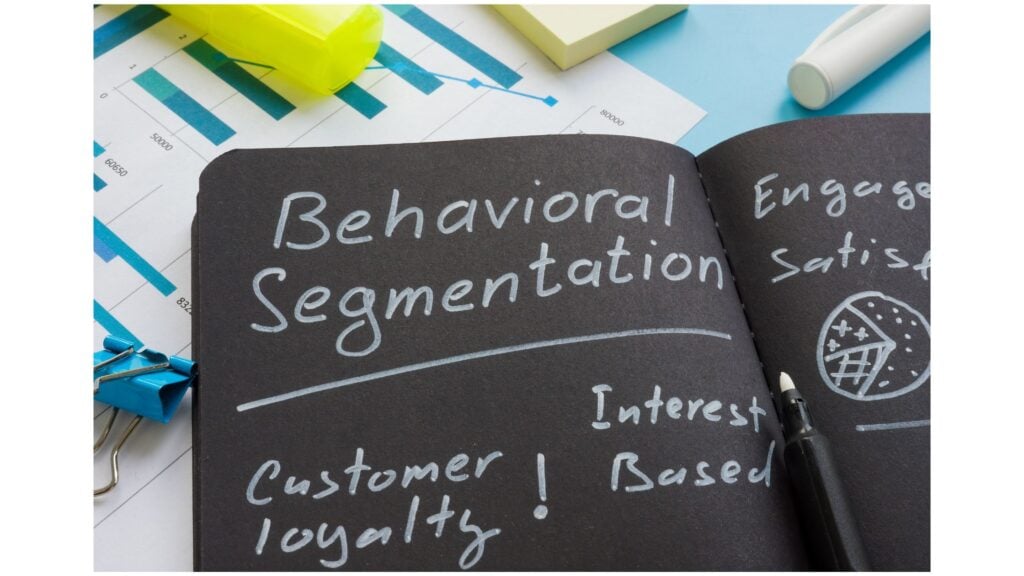Lifetime Fitness and Wellness Pursuits: A High School Curriculum Guide
Understand lifetime fitness and wellness pursuits in high school
High school represent a critical period for develop habits that can last throughout adulthood. Lifetime fitness and wellness pursuits in high school refer to physical education programs design to equip students with knowledge, skills, and attitudes necessary to maintain physical fitness and overall wellness throughout their lives. Unlike traditional physical education that might focus on competitive sports, lifetime fitness emphasize activities students can continue severally after graduation.
Core components of lifetime fitness programs
Effective lifetime fitness curricula in high schools typically incorporate several essential components that work unitedly to create a comprehensive approach to student wellness.
Physical activity foundations
The cornerstone of any lifetime fitness program involve teach students about various forms of physical activity that can be maintained throughout adulthood. These typically include:
-
Cardiovascular fitness
Through activities like walk, jogging, swimming, cycling, and aerobic exercises -
Strength training
Use body weight, resistance bands, free weights, or machines -
Flexibility training
Through stretch routines, yoga, and Pilates -
Balance and coordination
Exercises that support overall functional fitness
Preferably than focus entirely on team sports that may be difficult to continue after high school, these programs introduce students to activities they can realistically incorporate into adult life, careless of athletic ability or access to specialized facilities.
Fitness assessment and goal set
Students learn to assess their own fitness levels use standardized tests that measure cardiovascular endurance, muscular strength, flexibility, and body composition. Use these assessments, they develop personalize fitness goals and create plans to achieve them. This process teach valuable skills in:
- Self evaluation and realistic goal set
- Create progressive fitness plans
- Track progress and adjust goals consequently
- Understand the relationship between effort and results
By learn these assessment techniques in high school, students gain tools they can use throughout adulthood to monitor and maintain their fitness levels.
Nutrition education
Lifetime fitness programs recognize that physical activity represent solely one aspect of overall wellness. Comprehensive nutrition education teach students about:
- Basic nutritional principles and macronutrients
- Read and understand food labels
- Meal planning and preparation
- Recognize marketing influences on food choices
- Develop a healthy relationship with food
This knowledge empowers students to make informed dietary choices that complement their physical activity and support overall health throughout life.
Mental and emotional wellness
Modern lifetime fitness curricula progressively incorporate mental and emotional wellness components, recognize their crucial role in overall health. Students learn about:
- Stress management techniques
- Mindfulness and meditation practices
- Sleep hygiene and its impact on wellness
- The connection between physical activity and mental health
- Healthy cope strategies for emotional challenges
These skills provide students with strategies to maintain not upright physical health but besides emotional resilience throughout adulthood.
Benefits of lifetime fitness education
The implementation of lifetime fitness programs in high schools offer numerous advantages that extend far beyond graduation day.
Long term health improvements
Research systematically show that individuals who establish healthy habits during adolescence are more likely to maintain them throughout adulthood. High school lifetime fitness programs contribute to:
- Reduced risk of chronic diseases like diabetes, heart disease, and certain cancers
- Healthier weight management throughout life
- Stronger bones and reduce risk of osteoporosis
- Better cardiovascular health and lower blood pressure
- Improved immune function
By establish these habits other, students set themselves up for healthier adult lives with fewer medical complications.
Psychological and academic benefits
The benefits of lifetime fitness education extend beyond physical health to include significant psychological and academic advantages:
- Improved mood and reduce symptoms of anxiety and depression
- Enhanced cognitive function and academic performance
- Better concentration and focus in other classes
- Increase self-esteem and body image
- Development of discipline and perseverance
These benefits create a positive feedback loop where physical wellness support mental wellness, which in turn support academic achievement.
Social development
While lifetime fitness emphasize individual activities, these programs besides foster important social skills through:
- Partner and small group fitness activities
- Peer support and accountability
- Collaborative goal set
- Communication during physical activities
- Respect for diverse abilities and fitness levels
These social components help students develop interpersonal skills that benefit them in all areas of life while create supportive fitness communities.
Curriculum design and implementation
Effective lifetime fitness programs in high schools require thoughtful curriculum design and implementation strategies that engage students of all abilities and interests.
Inclusive approach
Unlike traditional physical education that might favor course athletic students, lifetime fitness programs emphasize inclusivity through:

Source: slidesgo.com
- Offer a variety of activities to appeal to different interests
- Modifications for students with disabilities or different fitness levels
- Focus on personal improvement quite than comparison to peers
- Create supportive environments free from judgment
- Celebrate diverse body types and abilities
This inclusive approach ensure that all students can find activities they enjoy and can continue throughout life, disregarding of athletic ability.
Technology integration
Modern lifetime fitness programs progressively incorporate technology to enhance student engagement and learning:
- Fitness trackers and apps to monitor activity and progress
- Video analysis of movement patterns and techniques
- Online resources for nutrition and workout information
- Virtual fitness communities and challenges
- Digital portfolios to document fitness journeys
This technology integration not simply increase student interest but besides prepare them to use digital wellness tools available in adulthood.
Community connections
Effective programs oftentimes extend beyond the school gymnasium to connect with the broader community through:
- Field trip to local fitness facilities
- Guest instructors from community wellness programs
- Service learn projects relate to community health
- Family fitness events and education
- Partnerships with local health organizations
These connections help students recognize fitness opportunities in their communities and prepare them to access similar resources as adults.
Challenges and solutions
Despite their benefits, lifetime fitness programs in high schools face several challenges that require creative solutions.
Limited resources
Many schools struggle with budget constraints that limit equipment, facilities, and staff for comprehensive fitness programs. Innovative solutions include:
- Develop no equipment or minimal equipment workout routines
- Create rotate stations to maximize use of limited equipment
- Utilize outdoor spaces and community facilities
- Apply for grants and community partnerships
- Involve students in equipment maintenance and program planning
These approaches allow schools to deliver quality programs despite resource limitations.
Student motivation
Engage adolescents in fitness activities can be challenge, especially for those with negative experiences in traditional physical education. Effective motivational strategies include:
- Offer choice among various activities
- Incorporate music, games, and social elements
- Use challenges and achievement recognition
- Connect activities to students’ personal interests
- Emphasize immediate benefits like stress reduction and energy
By focus on enjoyment and personal relevance, programs can overcome resistance and build intrinsic motivation.
Assessment challenge
Evaluate student progress in lifetime fitness presents unique challenges compare to traditional subjects. Effective assessment approaches include:
- Focus on personal improvement quite than comparison to norms
- Use portfolio assessment to document individual journeys
- Incorporate self assessment and reflection
- Evaluate application of knowledge through projects
- Assess long term habit formation sooner than short term performance
These assessment strategies align with the lifelong nature of the skills being taught.
Future trends in lifetime fitness education
The field of lifetime fitness education continue to evolve, with several emerge trends shape future programs.
Personalized fitness programming
Advances in technology and understanding of individual differences are lead to more personalized approaches:
- Customized fitness plans base on student interests and needs
- Genetic and physiological testing to inform exercise recommendations
- Adaptive technology that adjust difficulty base on progress
- Student direct learning paths within structured frameworks
- Personalized nutrition guidance base on individual factors
This personalization increase relevance and effectiveness while teach students to tailor approaches to their change needs throughout life.
Integration across curriculum
Progressive schools are move beyond isolate physical education classes to integrate wellness concepts across the curriculum:

Source: slidesgo.com
- Mathematics classes analyze fitness data
- Science courses explore exercise physiology
- Language arts assignments reflect on wellness journeys
- History lessons examine change fitness practices over time
- Art projects express wellness concepts
This interdisciplinary approach reinforces the importance of wellness while make connections to other academic areas.
Focus on environmental wellness
Emerge programs progressively recognize the connection between personal and environmental wellness:
- Outdoor education components that connect fitness with nature
- Discussions about sustainable food systems and nutrition
- Community improvement projects that combine physical activity with environmental stewardship
- Understand how environmental factors impact wellness
- Explore how individual wellness choices affect the broader world
This holistic approach help students understand wellness within broader ecological contexts.
Implement lifetime fitness at home
Parents and guardians play a crucial role in support lifetime fitness concepts learn in school:
- Model regular physical activity and healthy eat
- Create opportunities for family fitness activities
- Support teens in explore various fitness options
- Provide access to appropriate equipment and facilities when possible
- Discuss wellness concepts and reinforce school learning
This home support importantly will increase the likelihood that habits will form in high school will continue into adulthood.
Conclusion
Lifetime fitness and wellness pursuits in high school represent a crucial evolution in physical education — move from short term athletic performance to long term wellness preparation. By provide students with knowledge, skills, and attitudes need for lifelong fitness, these programs address critical public health challenges while support academic achievement and personal development.
The near effective programs combine physical activity, nutrition education, and mental wellness strategies in inclusive environments that meet diverse student needs. Despite implementation challenges, the benefits of these programs extend far beyond graduation, potentially influence health outcomes for decades to come.
As lifetime fitness education continue to evolve, its emphasis on sustainable, enjoyable activity patterns offer a promising approach to address sedentary lifestyles and relate health concerns. By prepare students to maintain fitness severally throughout adulthood, these high school programs fulfill education’s fundamental purpose: prepare young people for successful, healthy futures.



